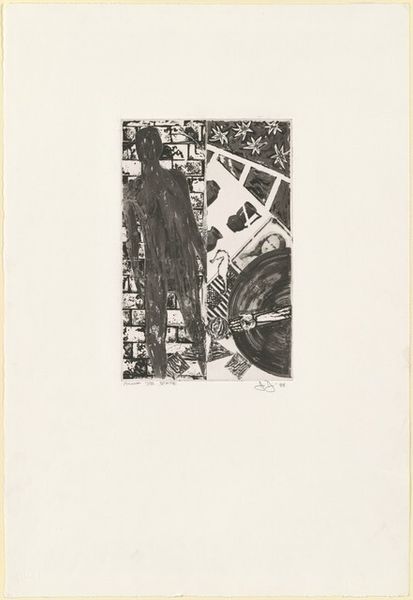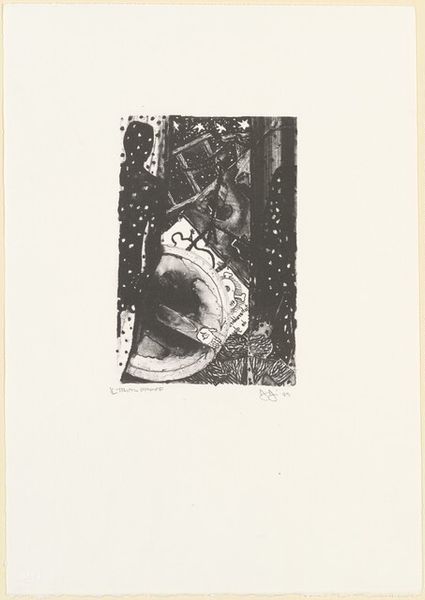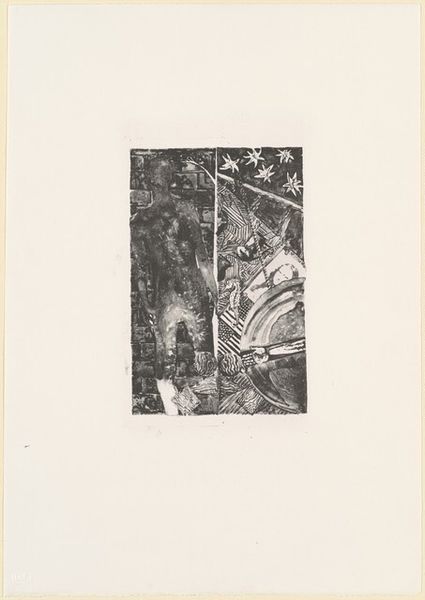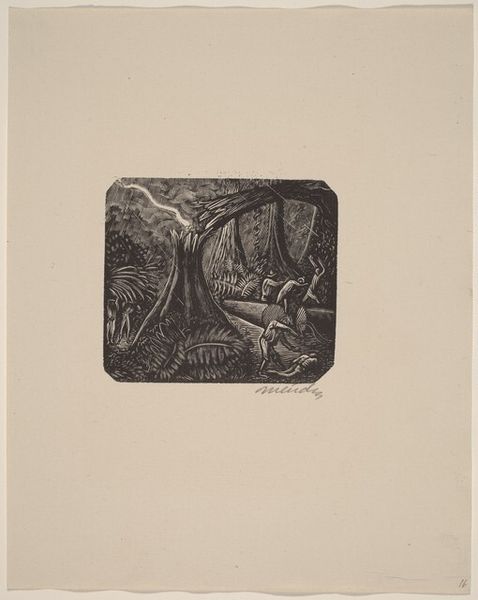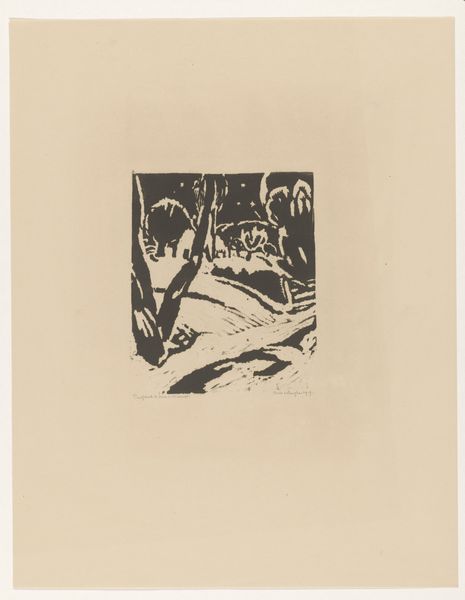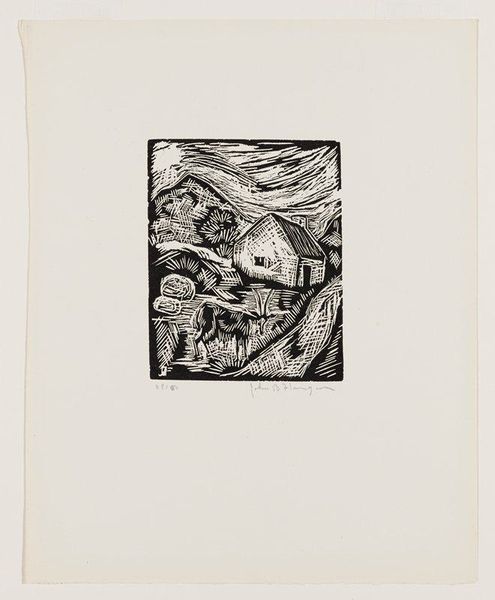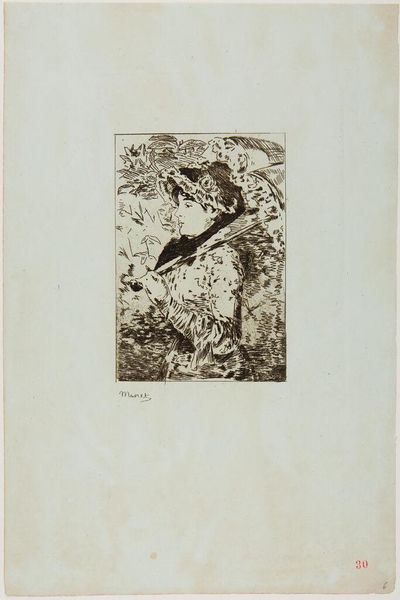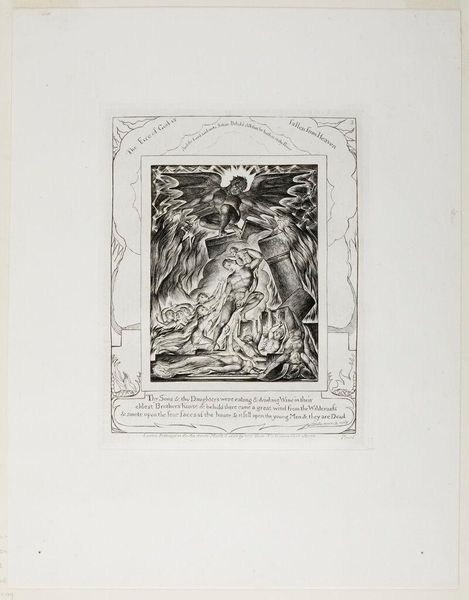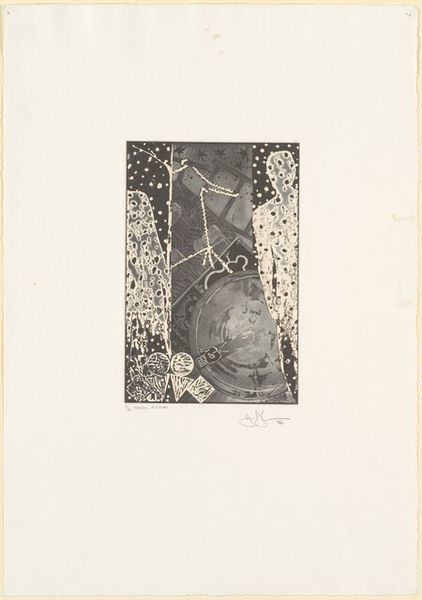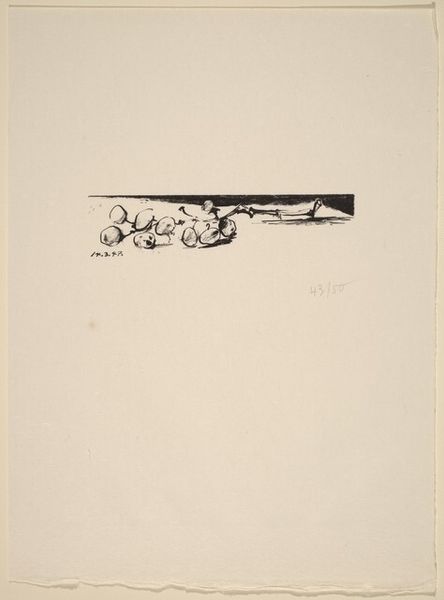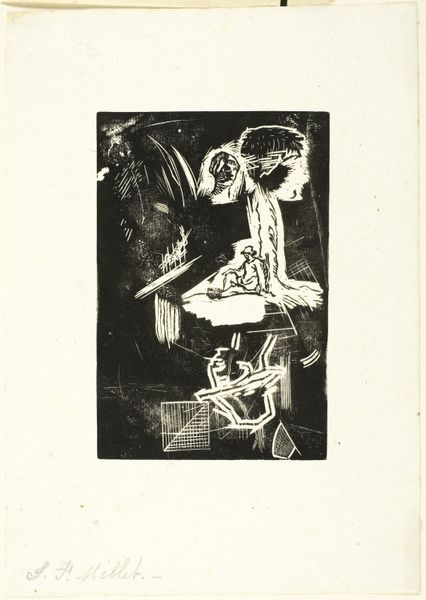![Winter [state proof] by Jasper Johns](/_next/image?url=https%3A%2F%2Fd2w8kbdekdi1gv.cloudfront.net%2FeyJidWNrZXQiOiAiYXJ0ZXJhLWltYWdlcy1idWNrZXQiLCAia2V5IjogImFydHdvcmtzL2I5MmRkNDI3LTE0YWUtNDM4Mi05M2QxLWYyOTAzMWE4NWM3NC9iOTJkZDQyNy0xNGFlLTQzODItOTNkMS1mMjkwMzFhODVjNzRfZnVsbC5qcGciLCAiZWRpdHMiOiB7InJlc2l6ZSI6IHsid2lkdGgiOiAxOTIwLCAiaGVpZ2h0IjogMTkyMCwgImZpdCI6ICJpbnNpZGUifX19&w=1080&q=75)
#
neo-dada
Dimensions: plate: 24.45 x 16.19 cm (9 5/8 x 6 3/8 in.) sheet: 55.88 x 38.1 cm (22 x 15 in.)
Copyright: National Gallery of Art: CC0 1.0
Curator: Jasper Johns's "Winter [state proof]," created in 1986, presents a compelling exploration of mixed media, primarily using etching and ink on paper. What strikes you first about it? Editor: The stark monochrome palette immediately creates a sense of bleakness, like a frozen landscape. The composition feels dense, claustrophobic almost, packed with varied textures. Curator: It’s interesting you note the texture. Johns, as always, plays with process in this work, highlighting the manual labor involved in printmaking. The varied patterns, achieved through etching, require meticulous work. Note also that he subverts traditional "high art" boundaries through printed means. Editor: The way the image uses visual density could be seen to address themes of trauma and memory. Those shadowy figures could be read in terms of loss, echoing personal or collective suffering during a period of social unrest. The snow evokes death as well, literally "snowing someone under". Curator: I see how you arrive at that. Consider this specific state proof—it offers a peek into Johns’s methodology. Proofs like these expose the additive, subtractive, and transformative journey he undertakes to build the final image, very much akin to the social and economic structures shaping art. The materiality here speaks volumes about production and labor. Editor: Looking at it, one can interpret the wheel motif, bisected as it is, as indicative of historical fragmentation, a society in crisis, even a critique of systems that perpetually perpetuate violence. Johns made this in the mid '80s, the age of rampant and violent capitalism. Curator: Yes, but let's also consider how the very act of layering different printing techniques, combining textures and patterns, underscores his postmodern sensibility. We cannot ignore the materials and the artist's labor to create. Editor: Agreed. It’s not just about personal expression; it’s a statement about representation itself, the historical baggage associated with imagery, its influence. Curator: Johns's dedication to craft and materiality enriches our engagement. Editor: Indeed, thinking about its socio-political context, it’s a haunting image about a fragmented culture.
Comments
No comments
Be the first to comment and join the conversation on the ultimate creative platform.
